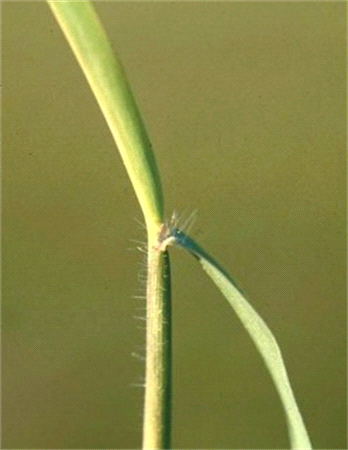Your Cart

Learn Your Lawn: Blanket & India Crabgrass
Request a Quote
Both Blanket Crabgrass and India Crabgrass are undesirable because of their coarse texture, unsightly color, and weakness of the plant’s structure. These characteristics do not blend well into a fine textured, dark green, healthy lawn. Once these grasses die off, they leave behind thin or bare patches, which will need to be renovated. Blanket Crabgrass is commonly found in lawns in the southern United States. It is known for its ability to grow and spread rapidly, hence its name: “Blanket” Crabgrass. It can grow up to 12 inches tall and has a branching stem with hairy leaves that are light green in color. The leaves are arranged in a spiral pattern and are very rough to the touch. Blanket Crabgrass is a summer annual or short-term perennial with creeping stolons that produce large quantities of seeds, which can last in the soil for several years. India Crabgrass is a warm-season grass that has a low growth habit and spreads to form a dense mat that can smother other plants. The leaf blades are quite short, usually about 1 inch long. The most significant difference between India Crabgrass and Blanket Crabgrass is that the sheaths and blades of India Crabgrass are smooth. India Crabgrass is usually found in dry sites, whereas Blanket Crabgrass favors moist to wet sites. An effective way to control small infestations of these invasive weed grasses is to pull up individual plants by hand, before seed heads are produced, and then repair these areas with desirable grass seed varieties or sod. If the infestation is larger, other forms of control may be necessary. Preventative applications can be applied for Crabgrass, but the products that are available will vary by region. A thick, healthy, well-maintained lawn is always the best line of defense. This can be achieved through beneficial cultural practices, which include: Core Aeration: Aerating your lawn can improve soil drainage and help reduce the likelihood of lawn diseases. This will also alleviate soil compaction and allow water and nutrients to penetrate deeper into the soil. Fertilize Regularly: Regular applications of Weed Man’s specially formulated, slow-release granular fertilizer will help provide your lawn with adequate nutrients. These applications are timed specifically to avoid over fertilizing the lawn. Watering: Under normal circumstances, you should be watering your lawn a few times per week for 30-45 minutes in each area. During hot and dry periods, most lawns should be watered as much as required to maintain its desired green color. Always water in the early morning so the turf has time to dry by nightfall. Mowing: Maintain a regular mowing schedule with a razor sharp blade. Never remove more than a ⅓ of the grass blade at each mowing. Recommended Mowing Height Common Bermudagrass - ¾ to 1¼ inches Hybrid Bermudagrass - ½ to 1½ inches Centipedegrass - 1 to 2 inches Zoysiagrass - 1 to 2½ inches St. Augustine - 3 to 4 inches Fescue - 3 to 4 inches Your local Weed Man professional will be able to offer other solutions and recommend the best form of treatment that is suitable to improve the conditions of your lawnWhat Is Blanket Crabgrass?
What Is India Crabgrass?
How Can I Control India Or Blanket Crabgrass In My St. Augustine’s Lawn?
 English (USA)
English (USA) Français (CANADA)
Français (CANADA)


